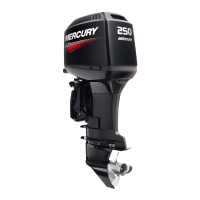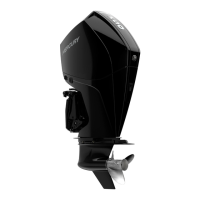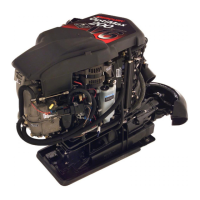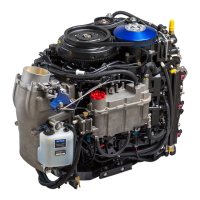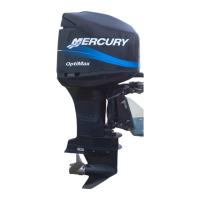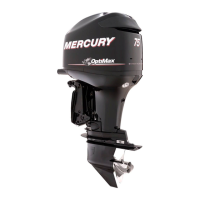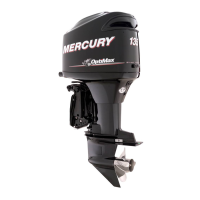MAINTENANCE
59
IMPORTANT: Visually inspect for fuel leakage from the drain screw by squeezing the primer bulb until firm, forcing
fuel into the chamber.
Steering Link Rod Fasteners
IMPORTANT: The steering link rod that connects the steering cable to the engine must be fastened using special
washer head bolt ("a" ‑ Part Number 10‑849838) and self‑locking nylon insert locknuts ("c" & "d" ‑ Part Number
11‑826709113). These locknuts must never be replaced with common nuts (non‑locking) as they will work loose
and vibrate off freeing the link rod to disengage.
!
WARNING
Disengagement of a steering link rod can result in the boat taking a full, sudden, sharp turn. This potentially
violent action can cause occupants to be thrown overboard exposing them to serious injury or death.
ob00676
a
b
c
d
a - Special washer head bolt (10‑849838)
b - Flat washer (2)
c - Nylon insert locknut (11‑826709113)
d - Nylon insert locknut (11‑826709113)
Description Nm lb. in. lb. ft.
Special washer head bolt 27 20
Nylon insert locknut "d" 27 20
Nylon insert locknut "c" Tighten until seats, then back off 1/4 turn
Assemble steering link rod to steering cable with two flat washers and self‑locking nylon insert locknut. Tighten
locknut until it seats, then back nut off 1/4 turn.
Assemble steering link rod to engine with special washer head bolt and self‑locking nylon insert locknut. First torque
bolt, then torque locknut to specifications.
Fuse Replacement
IMPORTANT: Always carry spare 2, 5 and 20 AMP fuses.
The electrical wiring circuits on the outboard are protected from overload by fuses in the wiring. If a fuse is blown,
try to locate and correct the cause of the overload. If the cause is not found, the fuse may blow again.
Open the fuse holder and look at the silver colored band inside the fuse. If band is broken, replace the fuse. Replace
fuse with a new fuse with the same rating.
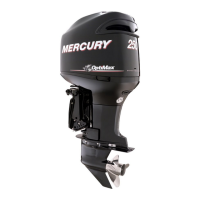
